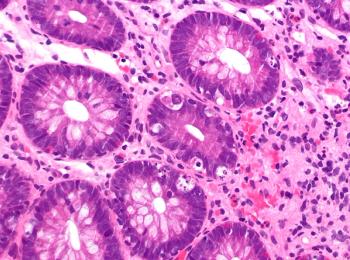
Possible Predictors of Treatment-Free Remission in Patients with CML
Researchers suggested that treatment-free remission may be successfully obtained with an effector-suppressor score which is calculated using absolute natural killer cells, FoxP3+ regulatory T cells, and monocytic myeloid-derived suppressor cells.
A study published in the British Journal of Haematology suggested that effective prediction of treatment-free remission (TFR) in patients with chronic myeloid leukemia (CML) may be successfully obtained with an effector-suppressor score, which is calculated using absolute natural killer (NK) cells, FoxP3+ regulatory T-cells (T-reg), and monocytic myeloid-derived suppressor cells (Mo-MDSCs).1
According to corresponding author Yazad Irani, PhD, a post-doctoral researcher in the GVL and Immunotherapy group at SAHMRI, this work could save more patients with CML from the physical and financial costs related to treatment with tyrosine kinase inhibitors (TKIs).2
“With TKI treatment, many patients get to the stage where they have no detectable cancer in their blood,” Irani said in a press release. “About half of these patients can safely stop taking their medication, but it’s very difficult to tell who will remain in remission and who will relapse.”
In this study, researchers characterized effector and suppressor immune response at the time of TKI cessation in patients from the CML8 and CML10 clinical studies, as well as from non-trial patients. The majority of patients were on imatinib (Gleevec; n = 42), compared to second generation TKI (dasatinib [Sprycel], n = 6; nilotinib [Tasigna], n = 11). The minimum follow-up for TFR patients was 12 months, and median follow-up was 4 years.
Overall, a total of 59 patients who stopped TKI were included, of whom 27 (45.8%) subsequently achieved TFR. Moreover, natural killer (NK) cells with increased expression of activating NK receptors were found to be higher in patients who achieved TFR. However, there was no difference in the proportion of CD4+ or CD8+ T-cells. Even further, researchers found that T-reg and Mo-MDSCs were collectively decreased in TFR patients, indicating that the effector and suppressor arms of the immune system may work together to mediate TFR.
The cohort of patients from CML10 were placed in a discovery cohort, which was used to generate a predictive model using logistic regression. The authors found that patients classified into the high-risk group were more likely to relapse, compared to the low-risk group (HR, 7.4; 95% CI, 2.9-19.1). Additionally, the model was successfully validated on the independent CML8 cohort (HR, 8.3; 95% CI, 2.2-31.3).
“Now that we know what to look for, we should be able to predict with far more accuracy who will make a successful attempt at TFR,” Irani said. “This has broad implications, not least of all that unsuccessful TFR attempts can have a major psychological impact on the patient and can significantly delay their next attempt at stopping treatment.”
Ultimately, the researchers suggested that an accurate predictive biomarker which incorporates the most relevant immune parameters would allow for an objective estimation of each patient’s probability of achieving TFR before they stop TKI therapy, which would aid in clinical decision-making and reduce uncertainty of TFR success. Through the findings of this study, they proposed that an effector-suppressor score measured at the time of TKI discontinuation may be a biomarker of immune surveillance and fitness, and may additionally prove to be highly predictive of TFR.
“Our findings represent a significant advance in the clinical management of CML, whereby patients who are more likely to have successful TFR are identified early so that unnecessary additional treatment is avoided,” the authors wrote. “Our score could also identify patients at higher risk of relapse for interventional strategies, such as vaccination or other immunotherapy, in order to improve their chances of successful TFR.”
References:
1. Irani YD, Hughes A, Clarson J, et al. Successful treatment-free remission in chronic myeloid leukemia and its association with reduced immune suppressors and increased natural killer cells. British Journal of Haematology. doi:10.1111/bjh.16718.
2. SAHMRI. Immune clues to help leukemia patients safely stop treatment. SAHMRI website. Published May 2, 2020.
Newsletter
Stay up to date on recent advances in the multidisciplinary approach to cancer.





















































































